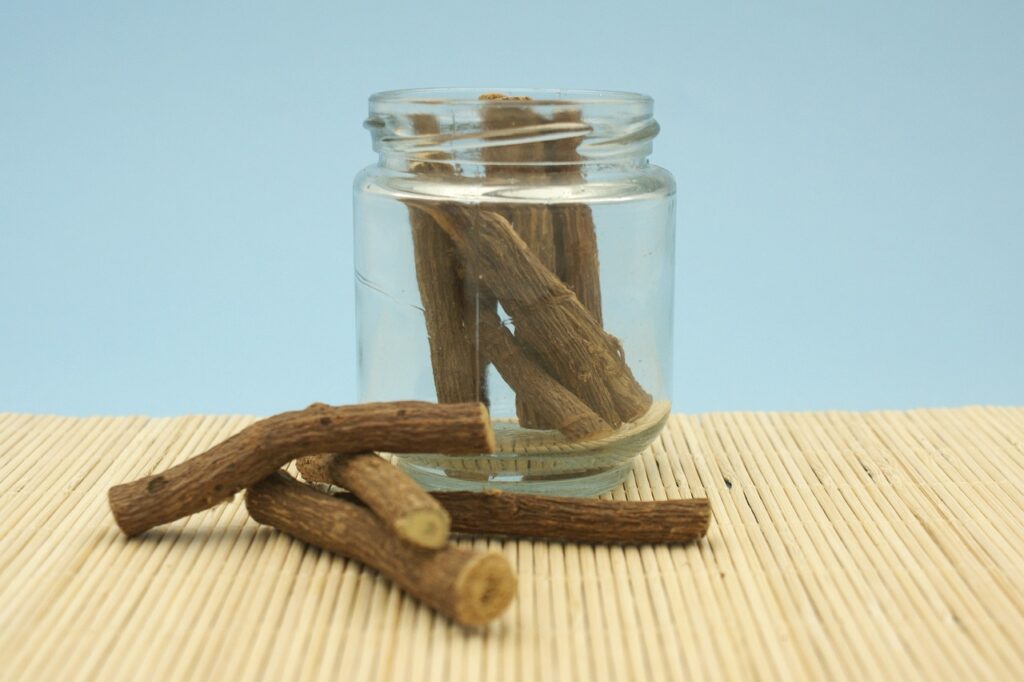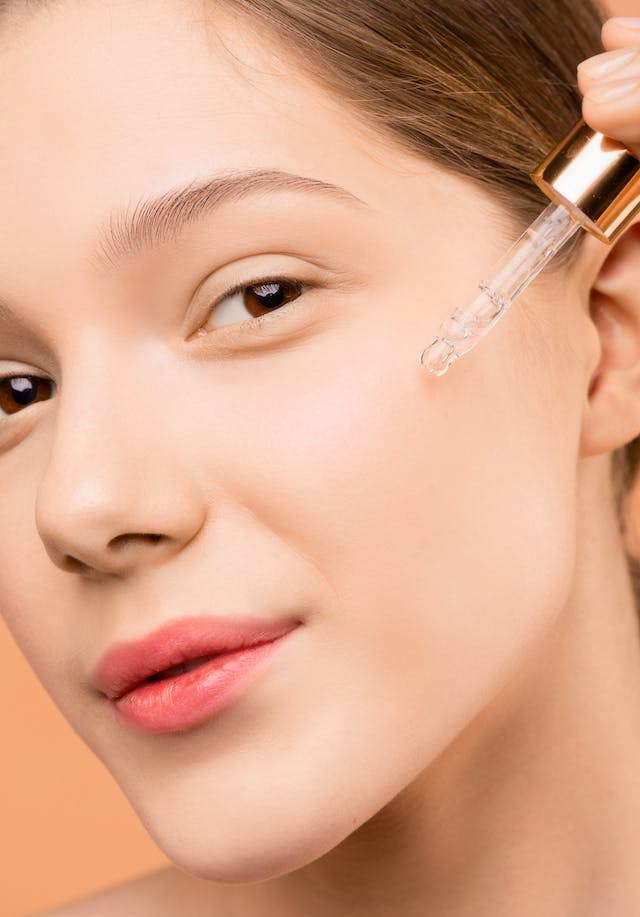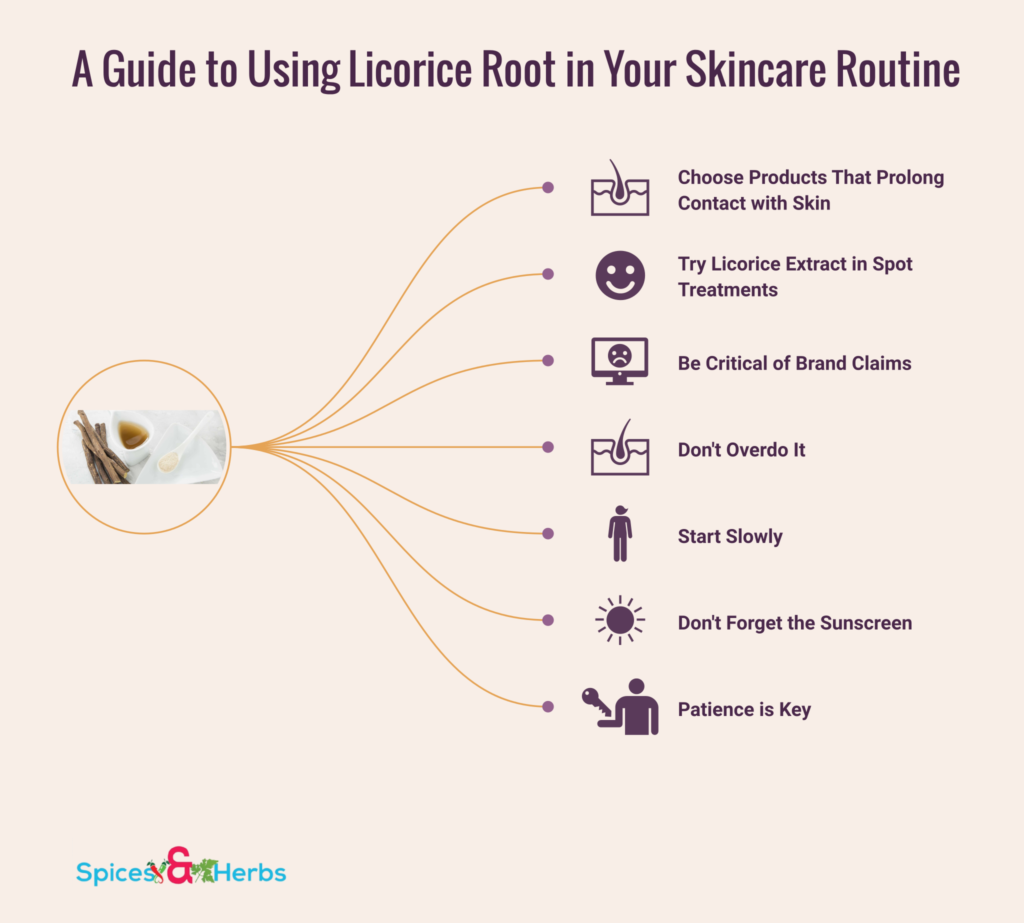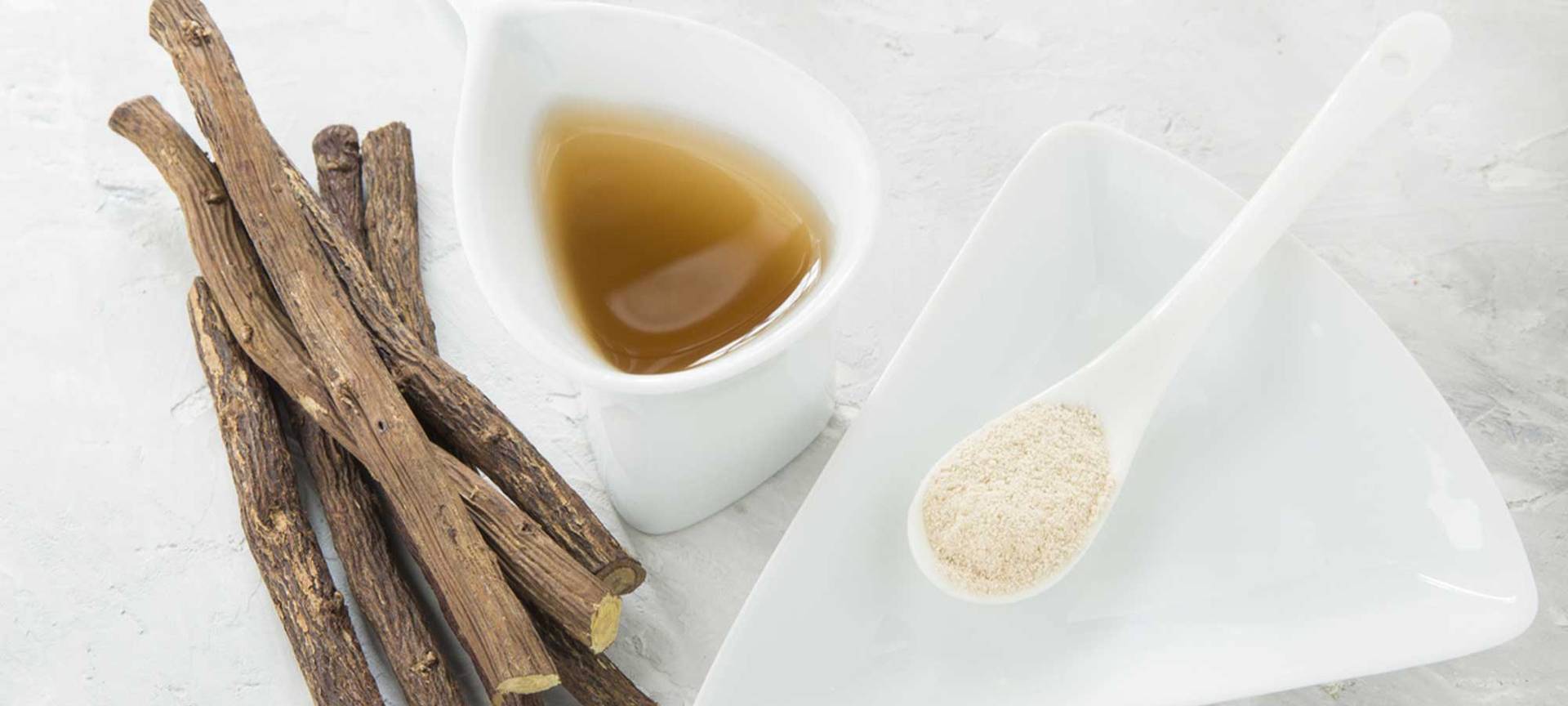Having clear, glowing skin can be key to making us feel our best selves. With the myriad of skincare products on the market today, it can be difficult to know which are truly most beneficial for our complexions. Today, I want to shine a spotlight on one particular ingredient: licorice root!
From its anti-inflammatory and antiseptic qualities to lightening dark spots, licorice root is an incredible powerhouse of benefits that are often overlooked as part of your guaranteed get-Radiant-skin routine.
In this blog post, I’ll be going over all about what are the skincare benefits of licorice root!
What is Licorice Root?

Licorice root, while being an absolute delight in the candy world (Twizzlers, anyone?), is also an herbal superstar with a storied past. Its medicinal uses date back to ancient civilizations in Southern Europe, China, and Egypt, and for good reason – this root is bursting with antioxidants and anti-inflammatory properties. It’s a skin-brightening maestro, adept at banishing those pesky dark spots that dull our glow.
The root gets its might from an active ingredient known as glycyrrhizin, a term that might sound overly convoluted, but trust me, it’s worth remembering. This component, derived from the glycyrrhiza glabra plant, is where all the skin-loving goodness of licorice root is stored. You might even feel like inking this plant’s name on your skin after hearing about its benefits!
You can find the sweetness of licorice root in various skincare products, from indulgent face creams to potent serums and pampering masks. What’s even better is that this natural wonder is suitable for all skin types. Whether you have sensitive skin or are dealing with irritating conditions like atopic dermatitis, licorice root is a gentle yet effective element in your skincare routine.
Traditional Uses of Licorice Root
Now, let’s travel back in time and explore how licorice root was traditionally used in various parts of the world, particularly Asia and the Middle East.
✅ Digestive health
Like a trusted old friend, licorice root has been there to soothe digestive woes for centuries. From acid reflux and stomach ulcers to heartburn, this herbal hero has helped many a belly find relief.
✅ Respiratory health
Licorice root has been a go-to remedy for coughs, sore throats, and bronchitis, offering us a comforting, warm embrace when we need it most.
✅ Skin health
As we already know, licorice root is a skincare champion. Its traditional use in tackling skin conditions like eczema, psoriasis, and acne only adds to its list of credentials.
✅ Hormonal balance
Here’s a fun fact – licorice root has been a traditional ally for women, used to balance hormones. From providing relief during menstrual cramps to easing menopausal symptoms, this root has been a dependable helper.
✅ Immune system support
Licorice root has helped our ancestors strengthen their immune systems and combat infections, serving as a protective shield.
✅ Stress relief
Feeling stressed? Licorice root was the traditional solution, used as a natural stress buster to help alleviate anxiety.
✅ Dental health
And finally, who would’ve thought this sweet root could support dental wellness, too? Traditionally, licorice root was used to keep tooth decay at bay.
With such a versatile and extensive list of benefits, can you see why I’m a big fan of this root? It’s a holistic wellness gem and an absolute keeper in any skincare routine!
The Skincare Benefits Of Licorice Root

As a skincare enthusiast, I am always on the lookout for natural ingredients that can benefit my skin. One such ingredient that has stood the test of time is licorice root extract. Used in traditional medicine for centuries, this humble root has numerous benefits for our overall health and well-being.
But what exactly are the skincare benefits of licorice root? Let me share with you some reasons why I can’t stop gushing about this amazing root.
👧 Licorice Root’s Anti-inflammatory Benefits
One of the top reasons I adore licorice root is its incredible soothing properties. Whenever my skin feels irritated or stressed from environmental factors, a skincare product with licorice root extract is my go-to. The root has natural anti-inflammatory compounds that help to calm the skin, reducing redness and puffiness and leaving it feeling relaxed and comfortable.
But the benefits of licorice root go beyond just everyday irritation. I’ve noticed that its regular use significantly helps manage conditions like eczema and psoriasis. These skin issues are often caused by inflammation, and the root’s anti-inflammatory benefits come to the rescue here. It helps to alleviate the redness, itching, and discomfort associated with these conditions, providing relief and promoting skin healing.
Licorice root also has a special place in my skincare routine for its magical effects on reducing redness and puffiness, especially under the eyes. I often find my eyes appearing tired and puffy due to lack of sleep or long work hours. Applying a cream with licorice root extract helps reduce the puffiness, and the gentle, soothing effect is simply blissful. The redness on my cheeks also seems to lessen, giving me a more even-toned complexion.
👧 Brightening and Evening Skin Tone
Another reason licorice root is a key player in my skincare routine is its ability to combat hyperpigmentation and dark spots. Hyperpigmentation is caused by an excess production of melanin, the pigment that gives our skin its color.
Licorice root contains a compound called glabridin, which inhibits the enzyme that triggers melanin production. By doing so, it prevents the formation of dark spots and helps lighten the existing ones, leading to a brighter, more even skin tone.
Compared with other brightening agents like vitamin C and hydroquinone, licorice root stands out for its gentle action. While vitamin C can sometimes irritate sensitive skin and hydroquinone has been linked to adverse reactions, licorice root is generally suitable for all skin types, making it a safer alternative.
And it’s not just me who has found success with licorice root. I’ve heard countless testimonials from others incorporating licorice root into their skincare routine. One of my friends, who had struggled with hyperpigmentation for years, saw a significant improvement in her skin tone after just a few weeks of using a serum with licorice root extract.
Another acquaintance noted that licorice root was the only thing that helped fade her post-acne marks, and she now swears by it for any dark spots or discoloration. With such powerful testimonials, it’s clear that the skincare benefits of licorice root are truly noteworthy.
👧 Antioxidant Protection and Anti-Aging Effects
Licorice root isn’t just a hyperpigmentation hero; it’s also a potent protector against environmental stressors like UV rays and air pollution. These stressors generate free radicals – unstable atoms that can damage skin cells, leading to premature aging and wrinkles. Licorice root is packed with powerful antioxidants that neutralize these free radicals, thereby safeguarding our skin from their harmful effects.
Moreover, licorice root maintains our skin’s firmness and elasticity. It stimulates collagen production—the protein responsible for skin structure and tightness. As we age, our collagen production naturally declines, contributing to sagging skin and wrinkles. By boosting collagen production, licorice root helps to counteract these aging signs, promoting a youthful, supple skin appearance.
In essence, incorporating licorice root into your skincare routine is a proactive approach to age management. It not only treats existing skin concerns like hyperpigmentation but also prevents future ones, most notably premature aging.
👧 Hydration and Skin Barrier Support
Licorice root is also exceptionally beneficial for dry and dehydrated skin types, offering substantial hydrating and moisturizing effects. Its extract contains licochalcone, a compound with significant sebum-regulating properties. This helps balance the skin’s oil production, ensuring that your skin maintains optimal moisture levels without becoming excessively oily.
Additionally, licorice root is rich in glycyrrhizin, an active compound that mimics the skin’s natural moisturizing factor. This keeps your skin hydrated and plump, alleviating dryness and flakiness, making it an exceptional ingredient for individuals with parched skin.
Furthermore, licorice root enhances your skin’s natural barrier function. It strengthens the skin’s defense mechanism against external stressors like pollutants, allergens, and irritants. This particularly benefits sensitive skin types, as a stronger skin barrier reduces reactivity and potential irritations.
👧 Pregnancy-Safe Retinol Alternative
During pregnancy and breastfeeding, moms must avoid using strong and revolutionary skincare products such as retinol and hydroquinone. Licorice root, with its potent brightening and toning properties, presents a safer alternative. It allows mothers to continue nurturing their skin without compromising their health or their babies.
It’s important to note that while some research advises against ingesting licorice root extract during pregnancy, most studies affirm its safety when used topically. However, suppose you’re considering using licorice root as a retinol alternative and have concerns about potential risks.
In that case, it’s always a wise idea to consult with your primary care physician.
👧 Regulates Oil Production in the Skin
Licorice root proves to be a boon for individuals grappling with oilier skin types. It contains a potent compound called licochalcone A, which is renowned for its oil-regulating properties. What sets licorice root extract apart is its role as a proficient emulsifier. It ensures seamless blending and efficient functioning of products possessing both water and oil-based ingredients.
Often, these components resist cohabitation, but with licorice root in the mix, compatibility issues are elegantly resolved. Scientific studies have acknowledged and applauded this unique aspect of licorice root, further emphasizing its indispensability in skincare routines.
Potential Side Effects
While licorice root offers numerous skincare benefits, it’s essential to introduce it to your skincare routine cautiously. It’s advisable to first test the extract on a small skin patch to gauge any adverse reactions. Instances of irritation should prompt immediate cessation of product use.
Some individuals may experience allergic reactions to licorice root, though such cases are relatively rare. These reactions might aggravate existing skin conditions, leading to further irritation and breakouts. The formulation of the skincare product and the way the extract is used can significantly impact these effects.
Generally, serums containing licorice root extract tend to be more beneficial due to their concentrated nature and higher ingredient content. Alongside utilizing licorice root, it’s crucial to integrate sunscreen into your routine. The skin may become more susceptible to sun damage and heightened sensitivity without adequate sun protection.
Tips for Using Licorice Root in Your Skincare Routine

Now that we’ve covered the skincare benefits of licorice root let’s talk about how to incorporate it into your daily routine. Here are a few tips and tricks to help you get the most out of this wonder ingredient:
➢ Choose Products That Prolong Contact with Skin
When incorporating licorice root extract into your skincare regimen, I recommend using products that remain on your skin for prolonged periods, such as serums and moisturizers. These types of products are typically more concentrated and give the active ingredients, like licorice root extract, adequate time to penetrate the skin and deliver their benefits.
Conversely, I wouldn’t suggest using a cleanser with licorice root extract, as it doesn’t stay on the skin long enough for the ingredients to penetrate.
➢ Try Licorice Extract in Spot Treatments
I also attest to the effectiveness of licorice root extract in spot treatments. These treatments target smaller areas of your skin, meaning they can deliver a concentrated amount of this beneficial ingredient precisely where it’s needed.
➢ Be Critical of Brand Claims
It’s important to scrutinize the claims made by skincare brands. If a brand is touting grand claims like rivaling prescription-grade products or promising to eliminate melasma, take a step back. It’s crucial to examine the brand’s other products and their integrity before deciding.
➢ Don’t Overdo It
While the idea of using multiple products with the same ingredient may seem appealing, I’d advise against it. Overuse can potentially lead to skin irritation, especially if you have a sensitive skin type.
➢ Start Slowly
Despite its gentle nature, it’s wise to introduce licorice root extract gradually into your routine. Begin with one product and use it for several days. If there’s no irritation or redness, you can begin incorporating other active ingredients back into your regimen.
➢ Don’t Forget the Sunscreen
No skincare routine is complete without sunscreen. It’s an essential part of protecting your skin, especially when using licorice root extract, which can aid pigment defense. I recommend using a broad-spectrum sunscreen with SPF 30 or higher, ideally one containing physical filters like zinc oxide.
➢ Patience is Key
Skincare is a marathon, not a sprint. The results of these products are subtle and take time to manifest. Give the product at least one to three months before expecting significant changes. If you’re using a pricier product and don’t see results after finishing the bottle, then it might be time to try something new.
DIY Recipes for Homemade Licorice Root Treatments
If store-bought products aren’t your thing, you can also try making your own licorice root treatments at home. Here are two simple recipes to get you started:
👩 Soothing Licorice Root Face Mask
One simple and effective way to enjoy the skincare benefits of licorice root is to make a DIY face mask. Here’s how I do it:
- Mix 1 teaspoon of licorice root powder with 1 tablespoon of honey and 1 tablespoon of aloe vera gel.
- Apply the mixture to your face, avoiding the eye area.
- Leave it on for 15-20 minutes and rinse with warm water.
- Always follow with your preferred moisturizer.
👩 Licorice Root Toner
Another option is to create a licorice root toner, which can help to balance your skin and enhance its natural glow. Here’s my recipe:
- Boil 1 cup of water and add 1 tablespoon of licorice root powder.
- Let it steep for at least 10 minutes.
- Strain the mixture and let it cool.
- Apply this licorice root toner with a cotton ball after cleansing and before moisturizing.
👩 Maximizing the Benefits
- Consistency is Crucial: Just like any other skincare product, consistent use is key to seeing the effects of DIY licorice root treatments. I recommend using these remedies 2-3 times a week for best results.
- Patch Test: Don’t forget to do a patch test on a small, discrete area of your skin before applying these DIY treatments to your face. Even natural ingredients can cause reactions in some people.
- Stay Hydrated: Drink plenty of water to keep your skin hydrated from the inside out, enhancing the overall impact of the licorice root treatments.
- Healthy Diet: A balanced diet rich in fruits and vegetables can complement your skincare regimen and boost the benefits of licorice root.
Frequently Asked Questions
Q: Can licorice root help with acne?
Absolutely! Licorice root’s anti-inflammatory properties can help soothe acne-prone skin. It can also help reduce redness and swelling associated with acne.
Q: Is licorice root safe for all skin types?
Yes, licorice root is generally safe for all skin types. However, as with any new skincare product, it is recommended to do a patch test first to check for any adverse reactions.
Q: How often should I use licorice root skincare products?
For best results, incorporating licorice root products into your skincare routine 2-3 times a week is recommended. Consistency is crucial to see the effects.
Q: Can I combine licorice root with other skincare ingredients?
Yes, licorice root can be combined with other skincare ingredients like honey, aloe vera, or your preferred moisturizer. It can enhance the effectiveness of these products.
Q: Can licorice root help with sun damage?
Licorice root contains powerful antioxidants that can help protect the skin from environmental damage, including sun damage. It’s a great addition to your post-sun skincare routine.
Conclusion
As a herbal remedy, licorice root offers a natural solution to a range of skin care problems. Although research on the efficacy of licorice root is sparse, many people find that beauty products containing it yield positive results. Its antioxidant and anti-inflammatory properties make it an excellent choice for those looking to improve the overall appearance of their skin. While some possible side effects exist, focusing on using quality products and applying qualified advice from medical experts can help reduce risk.
When used properly, licorice root can be beneficial in attaining desirable results for your complexion. So why not take a closer look at incorporating this super ingredient into your skincare regime? With continual use, you’re sure to notice the powerful benefits that Licorice Root has to offer!

